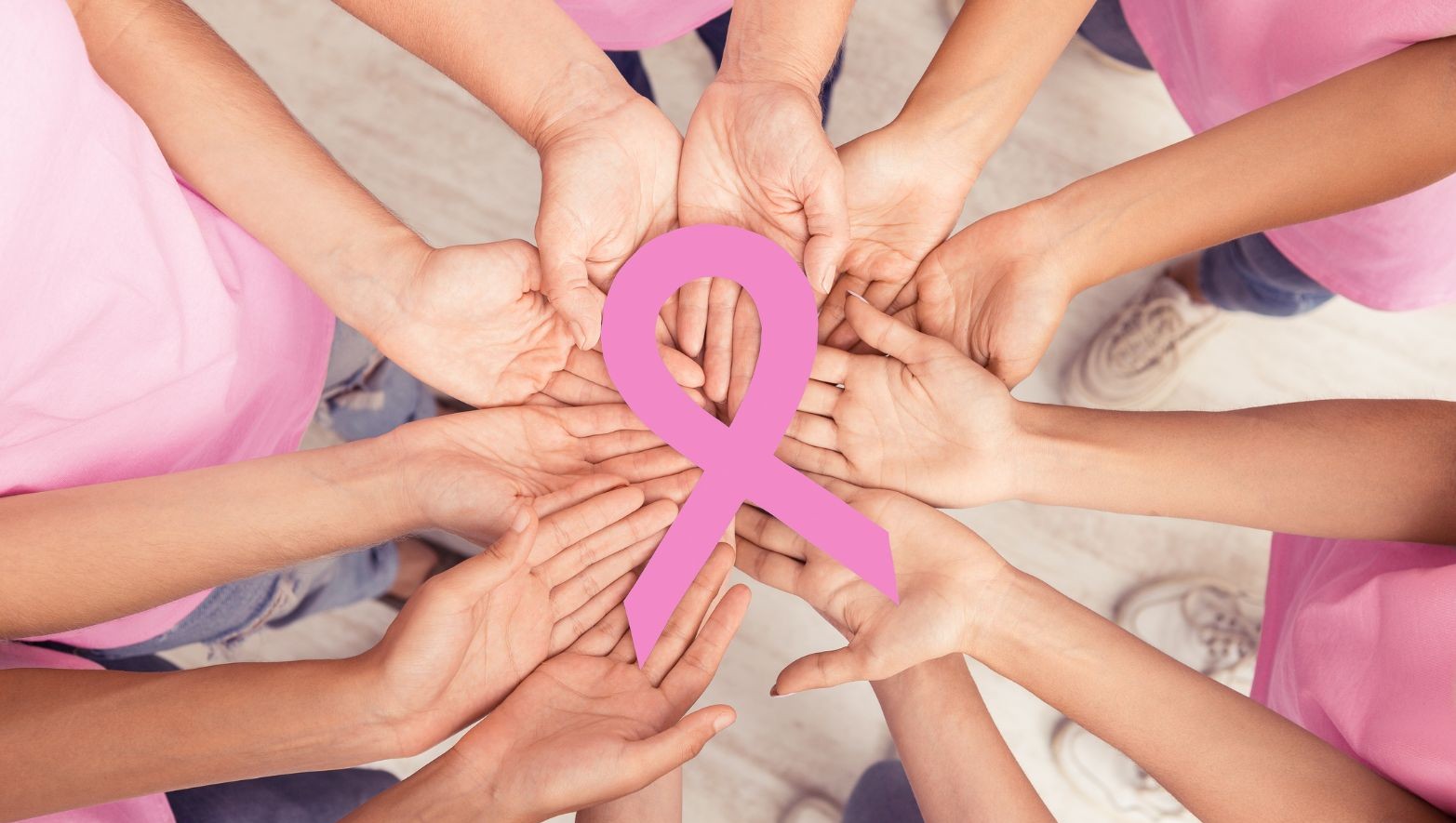The Global Story Behind the Pink Ribbon
By Antoinne Pepper
The little pink ribbon has become an enduring emblem of solidarity and hope. Every October the world “goes pink,” honoring millions of lives touched by breast cancer. The ribbon’s journey began in the early 1990s when New York breast cancer survivor Charlotte Haley hand-stitched peach-colored ribbons to call attention to under-funded research. In 1991, when Self magazine and Estée Lauder popularized a pink version, the symbol took off internationally. Today pink ribbons adorn everything from shopping bags and T-shirts to sports jerseys and even cereal boxes in October.
As WHO notes, Breast Cancer Awareness Month is “a time to create awareness [and] honour the millions of lives affected by breast cancer” each ribbon representing “mothers, sisters, daughters and friends”. The theme for 2025 “Every story is unique, every journey matters” shows the compassion and unity behind the ribbon. What began as a grassroots campaign has become a global movement: where pink flourishes each October, survivors and supporters share stories, and communities rally together in the name of early detection, advocacy, and research.
The Evolution of Cancer Awareness
Public attitudes toward cancer, and especially breast cancer, have changed dramatically over the past decades. In the mid-20th century, cancer was often spoken about in hushed tones. Activists like Mary Lasker and Terese Lasser in the 1940s–50s helped break the silence: Lasker lobbied the U.S. government to fund cancer research, and Lasser founded one of the first support programs (Reach to Recovery) for women after mastectomy. By the 1970s, prominent women went public with their diagnoses and championed patient advocacy.
In 1985 the American Cancer Society (ACS) and Imperial Chemical Industries (maker of tamoxifen) launched the first Breast Cancer Awareness Week in the United States. It quickly grew into Breast Cancer Awareness Month (BCAM) each October, aimed at educating women about screening and early detection. First Lady Betty Ford (a survivor herself) helped kick off that inaugural campaign, bringing media attention to the cause.
These efforts shifted public perception. Mammography and other screenings became routine for millions of women. Cancer in general lost some of its stigma as patient groups insisted on transparent research and information. By the late 20th century, pink ribbons, charity runs, survivor stories and “think pink” campaigns were everywhere in October. The result has been measurable progress: breast cancer mortality has fallen dramatically. In the United States, for example, breast cancer deaths are now more than 40% lower than they were in 1989. The ACS credits this decline largely to wider screening (now 75% of women are up to date on mammograms) and better treatments. Indeed, federal funding for breast cancer research soared alongside the rise of the pink ribbon and awareness efforts. Survival rates improved (today 5-year survival exceeds 90% in many high-income countries), while advocacy groups kept pushing for screening and equitable care.
Empirical Insights
Global burden. Breast cancer is now the most commonly diagnosed cancer in women worldwide. In 2022 there were an estimated 2.3 million new breast cancer cases and 670,000 deaths globally. (To put this in perspective, the World Health Organization notes that in high-HDI countries about 1 in 12 women will develop breast cancer in her lifetime, whereas in low-HDI countries about 1 in 27 will be diagnosed.) Breast cancer is the leading cancer among women in 157 of 185 countries. In absolute numbers, roughly 40–45% of new cases occur in Asia, 24% in Europe, 13% in North America, 9–10% in Latin America, and 8–9% in Africa.
Cancer in Africa and Nigeria. Sub-Saharan Africa bears a rapidly rising breast cancer burden. In 2022, SSA accounted for about 146,000 of those global cases and 71,600 of the deaths. A recent analysis finds that all of Africa (including North Africa) saw roughly 198,300 new breast cancer cases and 91,300 deaths in 2022. Nigeria, Africa’s most populous country, has the highest number in the region. Globocan 2022 estimates 32,278 Nigerian women were newly diagnosed – about 40.5% of all new cancers in Nigerian women that year. That made breast cancer the single most common cancer in Nigeria, far ahead of cervical cancer (13,676 cases, 17%). In fact, breast cancer accounted for roughly 25% of all new cancers (both sexes) in Nigeria in 2022. (By comparison, Globocan estimates about 8.6% of all cancer cases in Nigeria were breast, because prostate and cervical were common in men and women respectively.)
Globally and in Africa, survival rates remain much lower than in wealthier countries. The WHO notes 5-year survival for breast cancer exceeds 90% in high-income countries but falls to about 40% in places like South Africa. Many African women are diagnosed at advanced stages due to lack of screening and late presentation; some studies suggest up to 70% of Nigerian cases are found late, when treatment options are limited. (WHO’s 2025 African report warns that low survival rates often fall “below 50%” largely because of late diagnosis and weak healthcare infrastructure.)
Advances in detection and treatment. On the research front, major breakthroughs have reshaped breast cancer care worldwide. Since the 1980s, scientists discovered key risk genes (BRCA1, BRCA2) and brought new targeted drugs to market. For example, the HER2-positive breast cancer subtype became treatable in the late 1990s with the introduction of trastuzumab (Herceptin). In the 2000s, gene-expression profiling tests began guiding personalized therapy decisions.
In the 2010s, immunotherapy (checkpoint inhibitors) won approval for certain aggressive types (e.g. PD-1 blockers for advanced triple-negative cases). Even in 2020s, research continues at pace: scientists are testing prophylactic breast cancer vaccines, developing more sensitive genetic tests (including liquid biopsy blood tests), and integrating AI into mammography and MRI analysis. These advances mean many more women live longer after diagnosis – and some high-risk women can take preventive measures.
For perspective, here are just a few key milestones in breast cancer science (dates are approximate):
- 1980s–90s: Discovery of BRCA1/2 genes and FDA approval of the first targeted therapy (trastuzumab).
- 2000s: Widespread use of genomic testing to tailor treatment (Oncotype DX, MammaPrint, etc.).
- 2010s: Introduction of immunotherapy drugs for difficult subtypes of breast cancer.
- 2020s: Research into preventive vaccines, novel targeted agents (e.g. PARP inhibitors for BRCA carriers), and early-detection technologies.
Each advance has been backed by empirical study. As a result of better screening and treatment, many societies have seen rising survival rates. The American Cancer Society estimates that roughly 4 million people are currently living with a history of breast cancer in the U.S., and projects that to rise to over 5.3 million by 2035. (Globally, prevalence is also high, about 8.2 million women worldwide were alive within five years of a breast cancer diagnosis in 2022.) Researchers now anticipate that continued investment in science could push survival even higher.
Stories and Advocacy
Beyond the data, breast cancer awareness is driven by people and stories. Survivor networks and community groups play a powerful role. Non-profit organizations – from global giants like the American Cancer Society and Susan G. Komen to local NGOs – host annual walks, fundraisers, and support hotlines. For example, the ACS’s Making Strides Against Breast Cancer events bring together hundreds of communities to raise money for research and patient services. The WHO’s new Global Breast Cancer Initiative (established 2021) even encourages countries to form coalitions and share best practices for care.
In Nigeria and elsewhere in Africa, grassroots campaigns have proliferated. Organizations such as the Nigerian Cancer Society’s Lagos Branch and the Pink Ribbon Foundation Nigeria mark “Pink October” with free screening fairs, survivor conferences, and media outreach. Across social media, survivors and “thrivers” share photos of their scars, hair regrowth and life milestones, giving a face to the statistics and reducing stigma. Importantly, awareness groups work to include ALL affected women: special efforts highlight the needs of younger patients, men (breast cancer also affects males, about 0.5–1% of cases), and those with metastatic disease. (In fact, October 13 is Metastatic Breast Cancer Awareness Day, an observance that spotlights the 168,000 U.S. women living with stage IV disease.)
These campaigns not only encourage self-exams and mammograms, but also raise funds for care and research. Pink ribbon merchandise – T-shirts, pins, jewelry – and corporate sponsorships (e.g. the NFL’s “A Crucial Catch” campaign) funnel millions into cancer programs. The very sight of a pink ribbon or a team wearing pink football helmets in October reminds the public of the cause, and reminds patients that they are not alone. As one WHO press release put it, we are “standing together”, uniting policymakers, health workers, survivors and families in the fight.
1 in 8 women: That’s the lifetime risk of invasive breast cancer, according to the American Cancer Society. In the U.S., about 1 in 8 women will be diagnosed with breast cancer in her lifetime. This striking statistic (along with others) often becomes a rallying cry during awareness events.
The Pink Ribbon: A Symbol of Hope
The pink ribbon carries layers of meaning. Originators chose pink deliberately, focus groups considered it “soothing, comforting and healing,” a balm against a disease often associated with fear. No single organization owns the symbol: it exists in the public domain, freely adopted by charities and activists worldwide. By 1992, Estee Lauder had handed out 1.5 million pink ribbons at cosmetics counters, cementing the color’s link to breast cancer awareness. Today it decorates clinics, fundraisers, murals and even license plates, signaling that care and solidarity are inside.
Just as important as what it is is what it means: the pink ribbon stands for knowledge, compassion and the will to find a cure. It acknowledges loved ones lost to cancer and celebrates survivors’ strength. It also serves as a reminder for early detection (many women feel compelled to schedule mammograms or self-checks when the ribbon is highlighted in October). In recent years, advocates have expanded the symbol’s language: complementary ribbons or pink accents now honor specific subgroups (a lavender-pink ribbon for metastatic patients, a blue-pink for men, etc.). These variations recognize that “all people with breast cancer are not the same, yet the core message of hope remains universal. As activist Charlotte Haley’s simple peach ribbon did in 1991, the pink ribbon today continues to tie together science and community.
The Hope for a Cure







